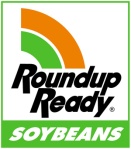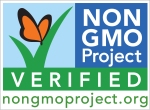Who would have ever thought that something as seemingly harmless as a calcium supplement could actually cause harm? Unfortunately for us, that is exactly what new research has revealed.
An analysis published in the British Medical Journal in 2010 found a modest increase in the risk of a heart attack with calcium supplements.* This prompted the authors to conclude that “a reassessment of the role of calcium supplements in the management of osteoporosis is warranted.”
 Now new research has also discovered a link between calcium supplements and heart disease.** This study followed approximately 24,000 people between the ages of 35 and 64 for 11 years. The researchers found that people who got their calcium almost exclusively from supplements were more than twice as likely to have a heart attack. No one knows for sure why this happened. They thought the increase might be due to a spike in calcium levels in the blood. In contrast, the lower amount of calcium found in food would not cause such a spike.
Now new research has also discovered a link between calcium supplements and heart disease.** This study followed approximately 24,000 people between the ages of 35 and 64 for 11 years. The researchers found that people who got their calcium almost exclusively from supplements were more than twice as likely to have a heart attack. No one knows for sure why this happened. They thought the increase might be due to a spike in calcium levels in the blood. In contrast, the lower amount of calcium found in food would not cause such a spike.
Calcium is essential for our body, and it is linked with bone health, lower blood pressure levels, and possibly even a lower risk of colon cancer. However, until we know more, it might be best to get calcium from food. So what can you do instead of taking a supplement?
The easy answer is to choose fat-free or low-fat dairy products or eat yogurt, preferably Greek. However, for a lot of people dairy just does not make sense. Some people choose to avoid it for ethical reasons. There are numerous health reasons why someone might avoid dairy as well. In the book, The China Study, a link was found between casein, the protein in milk, and cancer. And a high intake of dairy has been linked to an increased risk of prostate and ovarian cancer. Dairy can also make symptoms worse for people with autoimmune diseases, sinus problems, chronic bronchitis, heartburn, irritable bowel syndrome, and eczema. Some people have lactose intolerance, which means they don’t have the enzyme that breaks down the sugar in milk, and others may be allergic to it.
So what are the good nondairy sources of calcium? As I mentioned in my post “Got Kale?”, you can have 1¾ cups of kale, which is equal to the amount of calcium in 1 glass of milk. I really like Trader Joe’s Lacinato kale. It makes it super easy to use since it is already washed and chopped—and it’s organic. I put 2 large handfuls of kale, 1 inch of peeled ginger, an apple and about 1½ cups of water in my high powered blender. If you want something sweeter you can try adding mango instead of an apple. Other good options that offer the same amount of bioavailable calcium as a glass of milk include:
It makes it super easy to use since it is already washed and chopped—and it’s organic. I put 2 large handfuls of kale, 1 inch of peeled ginger, an apple and about 1½ cups of water in my high powered blender. If you want something sweeter you can try adding mango instead of an apple. Other good options that offer the same amount of bioavailable calcium as a glass of milk include:
- 1¼ cups of bok choy
- just over ½ cup of calcium set tofu (calcium processed)
- 2½ cups of broccoli
- 1 cup of turnip greens
- 1½ cups of mustard greens
Bok choy is particularly yummy and easy to prepare.  I like to sauté it with some rice vinegar, MIrin (rice wine), a dash of tamari, a few drops of sesame oil, and Chinese Five Spice.
I like to sauté it with some rice vinegar, MIrin (rice wine), a dash of tamari, a few drops of sesame oil, and Chinese Five Spice.
While the amount of calcium in spinach looks good on paper, the calcium is not bioavailable because of its high oxalate content. You would have to eat almost 8 cups of spinach to get the same amount of calcium as 1 cup of milk!
So why not try an alternative to a calcium supplement today? Your heart, and maybe even the rest of your body, will thank you for it.
___________
*Effect of calcium supplements on risk of myocardial infarction and cardiovascular events: meta-analysis. Bolland MJ, et al. BMJ. 2010 Jul 29;341.
**Associations of dietary calcium intake and calcium supplementation with myocardial infarction and stroke risk and overall cardiovascular mortality in the Heidelberg cohort of the European Prospective Investigation into Cancer and Nutrition study (EPIC-Heidelberg), Kuanrong Li, et al. Heart 2012;98:920-925.
Copyright © 2012 Carole Bartolotto, MA, RD. All rights reserved.









